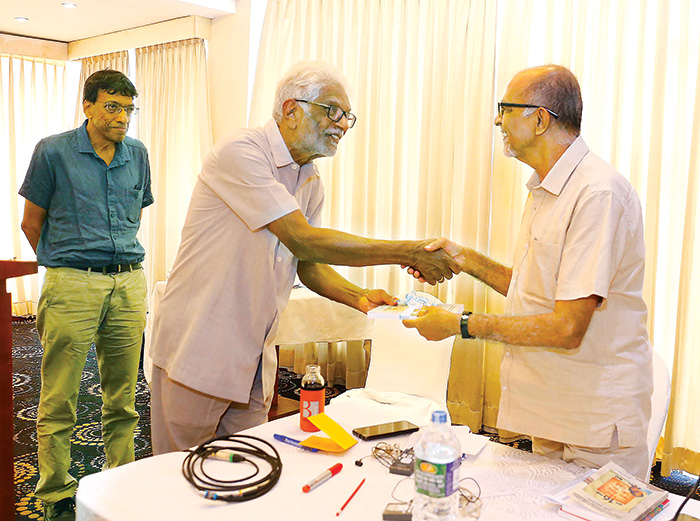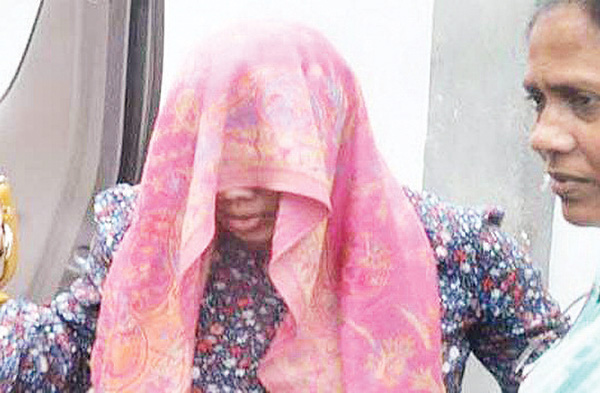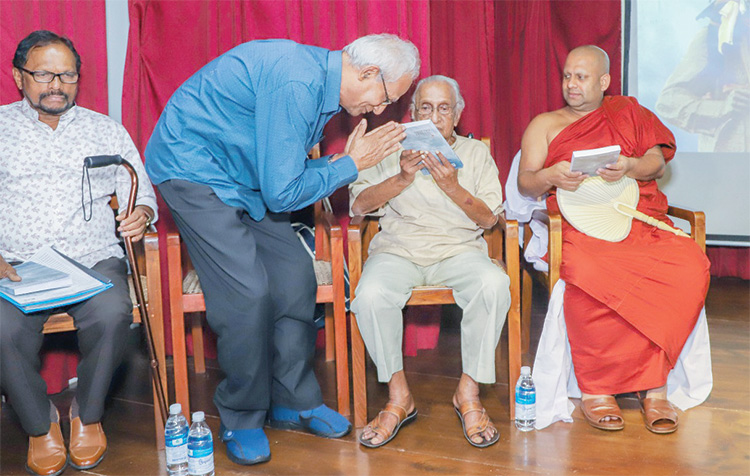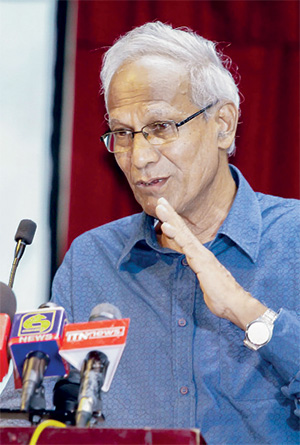SPECIAL REPORT : Part 480
By Shamindra Ferdinando
Thilini Kahandawaarachchi, on behalf of the Norwegian Embassy, on July 06, 2023, reminded the media of the closing down of the mission on July 31, 2023. In her capacity as the Senior Political Advisor at the mission, Kahandawaarachchi, stated that with effect from August 1, 2023, the Norwegian Embassy in New Delhi would be responsible for both Sri Lanka and the Maldives. The last email from the mission in Colombo was aptly titled ‘Goodbye from the Norwegian Embassy in Colombo.’
Norway established diplomatic mission here in 1996, ahead of taking up therole as the Chief peace facilitator of the last bid to work out a negotiated settlement with the tacit understanding with New Delhi.
Norway announced its decision to close down its mission here in early September last year. The Norwegian announcement followed the declaration made in April, the same year, by our Foreign Ministry, that Sri Lanka’s mission in Oslo would be closed down. Sri Lanka attributed its decision to the economic crisis.
Norway quit 15 years after Sri Lanka brought the war to a successful conclusion. Sri Lanka sustained a nearly three-year long largest ever combined security forces campaign launched during the highly questionable Norwegian peace effort or pieces effort i.e. the breakup of the country, until a soldier shot elusive Tiger Supremo Velupillai Prabhakaran through his head on the banks of the Nanthikadal lagoon on the morning of May 18, 2009. By then, the LTTE conventional fighting power had been decimated for once and for all.
Contrary to speculation that the LTTE remnant could return to guerilla warfare, it couldn’t stage a comeback. In fact, there hadn’t been a single LTTE hit-and-run attack since the conclusion of the war.
However, the Tamil National Alliance (TNA) that served the interests of the Liberation Tigers of Tamil Eelam (LTTE) throughout the conflict and other interested parties, both here and abroad. continues to undermine post-war national reconciliation by demanding accountability on the part of the government alone. But, they are conveniently silent on the culpability of the LTTE for the death and destruction brought about by its terror campaign. Its brutality was such that the US Federal Bureau of Investigation termed it the most ruthless terrorist outfit in the world. So it is laughable for the TNA and some sections of civil society to demand accountability only from the government after having nourished and encouraged the terrorists all along. The TNA, in 2001, recognized the proscribed LTTE as the sole representative of the Tamil speaking people.
The issue of accountability also cannot be dealt with forgetting how India set up an unprecedented terrorism project here. Some believe India did so to get even with our then blindly pro-Western President Junius Richard Jayewrdene whose government mockingly compared Mrs. Bandaranaike and her son Anura with Mrs. Gandhi and her son Sanjay.
Unfortunately, Sri Lanka has pathetically failed to set the record straight. For want of a cohesive political strategy and treacherous attitude of successive governments, the TNA, having supported terrorism, has received the recognition as the chief representative of the Tamil speaking people. Other political parties represented in Parliament and an influential section of the civil society and Western powers have conveniently forgotten their despicable track record. The TNA backed the LTTE war strategy that involved ‘human shields’ on the Vanni east front by remaining silent. The TNA never even once requested the LTTE to stop using innocent Tamil civilians as ‘human shields’ or forcible recruitment of child soldiers from such hapless Tamil families. That is the ugly truth suppressed by all interested parties.
Perhaps against the backdrop of Norway closing down its mission here, the circumstances leading to the eradication of terrorism through military means can be re-examined. Did Sri Lanka make a genuine effort to bring the conflict to an end through peaceful means? Why a negotiated peace couldn’t be achieved regardless of costly foreign interventions? Can these issues be honestly discussed, taking into consideration the efforts made over the years with the focus on peace initiative undertaken during 2002-2008. The collapse of the last questionable effort. spearheaded by Norway, with a deliberate one-sided Ceasefire agreement it got from the then Premier Ranil Wickremesinghe to sign in 2002 with the LTTE without the approval of the then sitting President Chandrika Bandaranaike Kumaratunga. As it was violated at will by the Tigers from the word go, President Mahinda Rajapaksa had no choice but to launch an all-out war. The LTTE collapsed within three years, so much for their invincibility that was embedded into our psyche at every turn by the West and some sections of the media.
A must-read
Recently launched ‘THE PEACE PROCESS IN SRI LANKA AFTER THE CEASEFIRE AGREEMENT’ (from 2002-2008) by Dr. Joseph Vethamanickam William discussed the failure of the high profile peace efforts over the years leading to the final war. Dr. William is the Chairperson of civil society group National Peace Council (NPC).
The three-year combined security forces campaign for once with a truly dedicated and committed political and military leadership proved that the LTTE couldn’t match the Sri Lankan security forces. Dr. William’s assertion should be examined also taking into consideration ‘Pawns of Peace: Evaluation of Norwegian Peace Efforts in Sri Lanka (1997-2009)’ authored by Gunnar Sorbo, Jonathan Goodhand, Bart Klem, Ada Elisabeth Nissen and Hilde Selbervik and Mark Salter in ‘To End a Civil War; Norway’s Peace Engagement in Sri Lanka.’
Dr. William also underscored the importance of ‘A dove sits on my shoulder’ authored by Dr. Jehan Perera, also a member of the NPC’s Board of Directors.
Therefore, Dr. Perera’s work that focused on the war/conflict during 2007-2008 period, too, should be taken into consideration. Dr. Perera’s book contained his articles to the Daily Mirror beginning with one published on January 01, 2007 (The LTTE was still strong in the Eastern theatre at that time).
The Daily Mirror published the last article included in the book on Sept. 22, 2008. By then the dye was cast.
Having brought the Eastern Province under Government control in July 2007 with the capture of the LTTE’s last holdout in the East, the rocky outcrop known as Toppigala, the LTTE was retreating on multiple fronts.
Having perused Dr. William’s book which Dr. Perera said was the result of work over a period of over 10 years, it would however be pertinent to say that the author never really scrutinized the LTTE’s mentality. Their blood thirsty mindset underwent a major transformation for the worse after the Premadasa Administration told the Indian military mission here (July 1987-March 1990) to pack up and go. The LTTE manipulated the then President Ranasinghe Premadasa to get the Indian Army out of Sri Lanka after also getting truckloads of weapons from that foolish administration, that paved the way for the resumption of war in June 1990 is nothing but a masterstroke on the part of the Tiger lobby.
Within just weeks after the resumption of the war, the LTTE cut off the overland supply route to Jaffna. The LTTE could have overwhelmed the Jaffna based troops if not for heroic efforts by the Navy and Air Force to ensure their supplies.
The LTTE never believed in a negotiated settlement. On and off negotiations were cleverly used to rebuild their strength eroded due to battlefield losses and to secure an environment conducive for external interventions. Unfortunately, those who engaged in negotiations, egged on by the well-funded peace lobby, foolishly believed the LTTE could be satisfied through a political settlement. In other words, Dr. William, having engaged in peacebuilding efforts here for over a period of three decades, should have realized that the LTTE wouldn’t have accepted a negotiated agreement as long as it believed in its invincibility promoted by the West.
In fact, the LTTE fashioned the overall political developments/situations to achieve its objectives. There cannot be a better example than facilitating Mahinda Rajapaksa’s narrow victory at the 2010 presidential election by depriving Ranil Wickremesinghe of the Northern Province vote, which otherwise was a certainty for the UNP if the LTTE had not forbade the northern voters to cast their vote to the grand old party. Those who have alleged the Rajapaksas bribed the LTTE to order Tamils not to exercise their franchise should explain whether they really believed the late Velupillai Prabhakaran could have been compelled to deviate from his strategy by any means. Perhaps the TNA, which announced the 2010 presidential polls boycott on behalf of the LTTE, should at least now set the record straight after having been a partner in that crime as well. If not for the LTTE-TNA intervention, Ranil Wickremesinghe could have easily won the 2010 presidential poll. The difference between the winner and the loser was less than 200,000 votes.
Let me stress that the LTTE ensured Mahinda Rajapaksa’s triumph as it believed the new leader could be easily overwhelmed. The LTTE resumed devastating attacks just weeks after Mahinda Rajapaksa’s victory.
Misspent funds
The German Catholic Bishops’ Organization for Development Cooperation aka Misereor has funded Dr. William’s project. Why on earth German Catholic Bishops want to fund a book project on a failed peace process? The Catholic Church therein must have its reasons. However, Dr. William’s work gave a clear insight into the NPC’s thinking. Perhaps, the NPC unwittingly played into the hands of the LTTE. How could they have workshops funded by various interested parties, inter-religious campaigns and visits of journalists to the Jaffna peninsula with the approval of the LTTE facilitated the peace process. In fact, the LTTE exercised control over all NGOs and INGOs regardless of their status and level of involvement. In hindsight, those who funded NGO projects squandered quite a significant amount of funds on questionable ventures. What did they really expect to achieve by organizing groups of lawmakers to visit various countries? They couldn’t have been unaware that members of Parliament were not in a position to influence the LTTE at all.
Dr. William dealt with a costly project undertaken by the NPC in collaboration with International Alert to educate parliamentarians on conflict resolution in countries affected by similar situations. Of course, there is no doubt those picked by the NPC and International Alert thoroughly enjoyed all expenses paid foreign jaunts, though such visits never made an impact on the LTTE. The group remained hell-bent on achieving its aims through military means.
According to the author, altogether 29 MPs representing nearly a dozen political parties visited Crete, where they met those engaged in the negotiating process in South Africa, Northern Ireland and the southern Philippines island of Mindanao. The issuance of a statement by the parliamentarians requesting for talks with the LTTE had been the highlight of their post-foreign visits activities. There had been two other tours arranged by the NPC to Mindanao and Chittagong Hill Tracts in Bangladesh. Dr. William referred to what he called a significant shift in the peace process in the wake of PA-UNP discussion on a bi-partisan approach towards the conflict. But, the LTTE never took these initiatives seriously. They pursued a one track spectacular military strategy.
By the time Chandrika Bandaranaike Kumaratunga reign came to an end in Nov 2005, the LTTE was in command of the Northern region. The UNP’s utterly irresponsible entry into a Ceasefire Agreement with the LTTE in Feb. 2002 caused rapid deterioration of the security situation in the then amalgamated Northern and Eastern Provinces. The LTTE helped Mahinda Rajapaksa to win the presidential election believing the two provinces could be plunged into crisis along with the rest of the country with its well-entrenched sleeper cells in the south of the country. Their strategy was simple. Sharp intensification of violence in the two provinces and selected operations deep in the South.
The stage was set for an all-out war with both parties ready for a fight to a finish in the long drawn out conflict.
Misconceptions
Dr. William quite wrongly has asserted that Mahinda Rajapaksa’s victory at the 2005 presidential poll paved the way for resumption of war. Let me reproduce the line in question verbatim. In abstract, Dr. William stated: “The profound paradigm shift following President Rajapaksa’s coming into power from a liberal peace to a counter insurgency strategy, led to the abrogation of the CFA in 2008 and resumption of war that ended with the military defeat of the LTTE in May 2009.” Nothing can be further from the truth. The whole analysis is unfortunately built on a fallacy.
Dr. William appeared to have conveniently forgotten that the LTTE had been ready for war in August 2005 during Chandriika Bandaranaike Kumaratunga’s presidency. The LTTE wouldn’t have assassinated Foreign Minister Lakshman Kadirgamar at his Bullers Road residence if the group was prepared for the immediate resumption of war. Let me stress that Eelam War IV (the one referred to by Dr. William) resumed in the second week of August 2006 with simultaneous LTTE attacks in the Northern and Eastern theatres. The SLMM (Sri Lanka Monitoring Mission) records prove that the LTTE initiated the offensive.
By 2008, the LTTE was on total retreat with combined security forces turning the heat on multiple fronts, particularly targeting LTTE bases east of Kandy-Jaffna A9 road.
The author has addressed the contentious issue of the Indian intervention in Sri Lanka and the entire range of related issues (Chapter 3) systematically. The 13th Amendment to the Constitution now again under focus is among the issues addressed. However, in Chapter 4, Dr. William has made quite a wrong declaration that Sri Lanka sought the backing of the West to meet the threat posed by Tamil rebels. Under the section titled ‘Regional geopolitical interests (India), Dr. William declared: “In the early 1980s when Sri Lanka under a pro-Western government began to look to the West in its war against the Tamil rebels, India acted quickly by arming and training the Tamils to exert pressure on Colombo.”
The truth is Sri Lanka had to hurriedly seek arms, ammunition and equipment and expand military training in response to the alarming Indian intervention and certainly not the other way around. Sri Lanka wouldn’t have even considered expanding the military if not for the security crisis created by India to meet its own domestic political needs. Actually, the West didn’t provide any tangible support. During the first Eelam war (1983-1987), Sri Lanka primarily received support from China, Pakistan and Israel. That wouldn’t have happened without the approval of Washington but then the equation changed with the collapse of the Soviet Union. In addition to their support, the Channel Islands-based KMS provided training to Sri Lankan personnel with the approval of the British government.
Perhaps Dr. William, who launched his book, hadn’t read one-time India’s High Commissioner to Sri Lanka, J. N. Dixit’s memoirs, ‘Makers of India’s Foreign Policy,’ released in 2004. Dixit set the record straight with regard to the Indian interference which he preferred to call India’s interference during 1980-1990 period as ‘Indian involvement.’
Dixit asserted that the decision to give active support to Sri Lankan Tamil militants could be considered one of the two major foreign policy blunders made by the then Indian Prime Minister Indira Gandhi. But he strongly defended the Prime Minister’s action, while asserting Gandhi couldn’t have afforded the emergence of Tamil separatism in India by refusing to support the aspirations of Sri Lankan Tamils
[Chapter 6: An Indocentric Practitioner of Realpolitik-Makers of India’s Foreign Policy]. Dixit failed to explain how the Prime Minister hoped to achieve her twin objectives by recruiting, training, arming and deploying thousands of Sri Lankan Tamil youth. India also helped Sri Lankan terrorists establish contact with international terrorist groups.
Indian action caused irrevocable damage to Indo-Lanka relations. The Maldives, too, suffered due to Indian intervention in Sri Lanka. Dixit totally ignored the Maldivian factor, though India couldn’t absolve itself of the responsibility for the coup attempt in the Maldives in Nov. 1988.
A comprehensive study is needed to counter various misconceptions as regards the conflict as well as regional issues caused by Indian intervention.
However, with the return of Ranil Wickremesinghe to power at the expense of Gotabaya Rajapaksa, who comfortably won the last presidential election in Nov. 2019, the stage is set for taking Indo-Lanka relations to the next level. President Wickremesinghe’s recently concluded visit to New Delhi, exactly one year after Parliament picked him as the President to complete the remainder of his predecessor’s term, underscored New Delhi decisiveness in Indo-Lanka matters.
Indo-Lanka relations should be examined freshly taking into consideration the following matters: (1) state of bankruptcy (2) US led ‘Quad’ countries (Australia, Japan and India) response to Sri Lanka’s relationship with China and (3) emergence of China as world power. It would be a grave mistake on Sri Lanka’s part to accept external dictates in fashioning our foreign policy.



